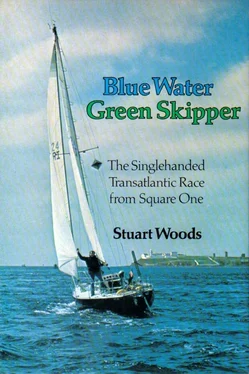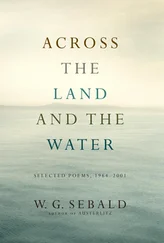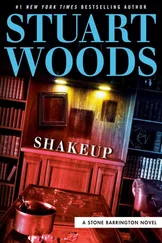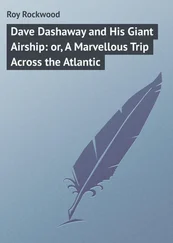Ron looked thoughtful. “Maybe raise the freeboard a little,” he said. The freeboard is the amount of hull between the deck and the waterline, and, so my reading had told me, was a principal factor in seaworthiness.
“Suppose,” I said, “we put a two-inch slice of teak between the hull and the deck? That would raise the freeboard and also give me another two inches of headroom in the cabin.” We were talking about how to change the yacht slightly to make it a fast cruiser instead of a flat-out racing boat. We had already talked about sawing the racing-type cockpit out of the glass-fiber molded deck and building a more conventional cruising cockpit with seats and lockers.
“I think that’s a rather intelligent solution,” he replied. I glowed at the thought of having contributed an original idea. We talked about what might be squeezed into the interior. Southcoast had hired a Swedish designer to do the interior, and I was considering doing my own layout with Ron’s help, since my requirements were different from the man who might race the boat on weekends, then take an occasional family cruise. I wanted no bunks forward in the boat. I wanted a large, empty forepeak for sail stowage and nothing else. It seemed to me that all the other boats I had seen with bunks forward always had the forepeak filled with wet sails anyway, so why have bunks?
Our evening was drawing to a close, and over coffee we had returned to the subject of a novice attempting to learn enough in a short time to sail the race successfully. I outlined what I thought I had to do in the remaining time. Up until now everything had been a big maybe, but I had been encouraged by my practically daylong talk with Ron. Finally, I said, “I think I can do it.” Ron said, “I think you can do it, too. I think it’s an exciting project, and I’d like to be involved in it.”
I think at that moment the basic decision was made.
Back at Lough Cutra there was a letter waiting from the OSTAR race committee. They had decided to accept Ewan Southby-Tailyour’s Hurley 24 entry because of his performance in the Round Britain Race but would accept no other Hurley 24s. Had the boat been of that size but of a more experimental nature, they might have considered it more favorably. I didn’t understand that last part, but anyway, my mind was now galloping off on another tack and the Shamrock had replaced the Hurley in my thinking.
Now I began, with no credentials whatever, to become a yacht designer, at least on the inside of the yacht. I pored over the layouts of dozens of other yachts, picking the features I liked best. First of all, since I didn’t want berths in the forecabin, that could be smaller and the saloon and toilet areas correspondingly larger. Then I crammed into the space available every feature I had heard about, read about, or imagined, and, to my astonishment, it all seemed to fit. A letter arrived from Barry Burke, with an estimate for fitting a skeg, rebuilding the cockpit, raising the decks with my teak sandwich idea, and building a custom interior to my specifications. It came to £1,600 above the cost of the standard boat. This was daunting, but maybe it could be lowered a bit by negotiation.
I had a telephone conversation with John McWilliam, the Crosshaven sailmaker who had clothed Golden Apple and Golden Shamrock. He had been out of town during my visit to Cork, but he had since talked with Ron and was enthusiastic about the project. We talked about a possible sail plan, and he sent an estimate. Another £1,600 or so was added to the budget.
About this time I felt enough committed to the project to begin to let my friends in Galway know what I was thinking. A friend from Dublin came down to Lough Cutra for the weekend, and I invited Harry McMahon and his wife to join us for dinner. At some point during the evening I mentioned, as casually as possible, that I was thinking of buying a Ron Holland half-tonner. The last boat I had mentioned to Harry had been the Hurley, and I hadn’t mentioned any plans for it beyond some coastal cruising. “What would you do with a half-tonner in Galway?” he asked.
I took a deep breath. “I’m thinking of sailing it in the Observer Single-handed Transatlantic Race,” I said. Harry looked stunned; his wife burst out laughing. That was to be fairly typical of the reactions of people who knew me as a Mirror helmsman in Galway. I would just have to get used to it.
In early December I went back to see Ron in Cork. He looked at my sketch of the interior and explained, as patiently as he could, that this would not fit, because the sides of the boat did not go straight down but curved inward. On a cruising boat with fuller “sections” it might be possible, but not on a hull designed for racing. Together we drew up a compromise of what might be possible. He did, however, agree with my idea of pushing the saloon bulkhead (wall) forward by making the forecabin smaller. Ron pulled out the drawings of a three-quarter-tonner he had designed for production in glass fiber, called the Quest 32. The company that was to manufacture it had gone under. We all agreed that it was a great pity that it would not now be built. Ron was at a stage of his career when he needed several boats in series production, just about the only way a yacht designer can make any real money.
Ron Holland was born and grew up in New Zealand, sailing from an early age. After secondary school he served an apprenticeship in boat building and, as a part of that, took some drafting and design courses. He then went to the United States and worked in California for a well-known designer, Gary Mull, and later, in Florida, for Charley Morgan of Morgan Yachts. He met the sailing-oriented family of Carlins there and married their daughter Laurel. In 1973, sailing his own boat, he won the world quarter-ton championships. The boat was called Eyghtene (after the Australian pronunciation of “eighteen”). After the world championships Ron was living aboard the little twenty-four-footer in the Hamble River in England when he was approached by a young Cork businessman about designing a one-tonner. Ron and Laurel came to Cork to talk about it, fell in love with Ireland, and stayed. Golden Apple performed brilliantly but erratically in the world one-ton championships in 1974, but she was obviously the fastest boat there and caught the attention of everybody, including the yachting press, and Ron’s reputation soared.
Back in Cork, Southcoast Boatyard, which had built Golden Apple, asked him to design a half-tonner to be built in time for the world half-ton championships at La Rochelle, in France. The boat, the original Golden Shamrock, was rushed to completion and arrived in La Rochelle barely in time for the first race. Because of a stretching of rigging which had occurred on the passage to France, and the lack of time to replace it, Shamrock was dismasted in the first race. Somehow, another mast was obtained immediately, and the crew stayed up all night rigging the boat. After that, she performed spectacularly, even in survival conditions, and the decision was made to put the design into series production in glass fiber. Now Ron had another one-off design, a two-tonner intended for the Irish Admiral’s Cup team, and the biggest boat he had yet designed. This, he hoped, would be as important a boat as Golden Apple, but he still wanted more designs in series production. The dying of the Quest 32 was a blow.
In Cork I also met John McWilliam, the sailmaker, and had another talk with Barry Burke at Southcoast. I also had a talk with Ron’s landlord, and told him I was very interested in the cottage. He seemed amenable to having me there.
A few days later, as my Aer Lingus flight took off from Shannon Airport, headed for New York, then Georgia and the Christmas holidays, a broad plan had come together for the project: move to Cork in February, study navigation all winter and sail during the spring on any boat whose skipper would have me; the boat would start building May 1 and be launched July 1; then sail her intensively, going out to southwest France and northwest Spain or perhaps even the Azores with friends, then sail back to Crosshaven, single-handed, for my qualifying cruise. (I wanted to sail more than the minimum five hundred miles, hoping that a longer qualifying cruise would count with the race committee against my inexperience.)
Читать дальше












